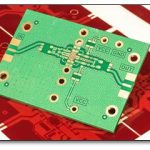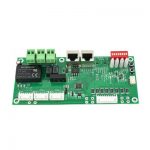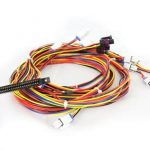What is PCB Design Software?
PCB design software is a computer-aided design (CAD) tool used to create and edit PCB layouts. It allows engineers and designers to conceptualize, prototype, and prepare PCB designs for manufacturing. PCB design software typically includes schematic capture, component placement, routing, design rule checking (DRC), and generation of manufacturing files such as Gerber and drill files.
Key Features to Consider in PCB Design Software
When evaluating PCB design software, there are several key features to consider:
-
Ease of Use: The software should have an intuitive user interface and be easy to learn and navigate.
-
Schematic Capture: The ability to create and edit schematic diagrams is essential for designing the circuit.
-
Component Libraries: Extensive component libraries save time and ensure accurate designs.
-
Routing Capabilities: Automated and manual routing options are crucial for efficient PCB layout.
-
Design Rule Checking (DRC): Automated DRC helps identify and resolve design issues before manufacturing.
-
Manufacturing File Generation: The software should generate industry-standard files for manufacturing, such as Gerber and drill files.
-
Collaboration and Version Control: Tools for collaboration and version control are important for team projects.
-
Simulation and Analysis: Some PCB design software includes simulation and analysis tools to optimize designs.
-
Cost and Licensing: Consider the cost and licensing options that fit your budget and usage requirements.
Top PCB Design Software Options
1. Altium Designer
Altium Designer is a comprehensive PCB design software used by professionals worldwide. It offers a complete set of tools for schematic capture, 3D PCB design, advanced routing, and manufacturing file generation. Altium Designer is known for its powerful features, extensive component libraries, and excellent documentation.
| Feature | Description |
|---|---|
| Unified Design Environment | Seamless integration of schematic capture, PCB layout, and 3D visualization |
| High-Speed Design | Advanced tools for high-speed design, including signal integrity analysis and impedance matching |
| Rigid-Flex PCB Design | Support for designing rigid-flex PCBs with advanced routing capabilities |
| Component Management | Comprehensive component management system with access to extensive libraries |
| Design Reuse and Collaboration | Design reuse and collaboration features, including version control and design data management |
Pros:
– Comprehensive feature set for complex PCB designs
– Extensive component libraries and design resources
– Powerful routing and simulation capabilities
– Excellent documentation and customer support
Cons:
– Higher cost compared to other PCB design software
– Steep learning curve for beginners
2. KiCad
KiCad is a free and open-source PCB design software that has gained popularity among hobbyists, students, and professionals. It offers a complete suite of tools for schematic capture, PCB layout, and manufacturing file generation. KiCad is known for its active community, regular updates, and cross-platform compatibility.
| Feature | Description |
|---|---|
| Free and Open-Source | No cost for using the software, with access to source code for customization |
| Cross-Platform Compatibility | Runs on Windows, macOS, and Linux operating systems |
| Schematic Capture and PCB Layout | Integrated tools for schematic capture and PCB layout with a user-friendly interface |
| 3D Visualization | 3D viewer for visualizing PCB designs and component placement |
| Active Community | Vibrant community for support, tutorials, and resources |
Pros:
– Free to use with no licensing costs
– Cross-platform compatibility
– Active community for support and resources
– Regular updates and improvements
Cons:
– Limited advanced features compared to commercial software
– Smaller component libraries compared to commercial alternatives
3. Eagle
Eagle is a popular PCB design software owned by Autodesk. It offers a user-friendly interface, schematic capture, PCB layout, and manufacturing file generation. Eagle is known for its ease of use, extensive component libraries, and affordable pricing options.
| Feature | Description |
|---|---|
| User-Friendly Interface | Intuitive and easy-to-learn user interface for schematic capture and PCB layout |
| Extensive Component Libraries | Access to a wide range of component libraries, including user-created libraries |
| Schematic Capture and PCB Layout | Integrated tools for schematic capture and PCB layout with a streamlined workflow |
| Design Rule Checking (DRC) | Automated DRC to identify and resolve design issues before manufacturing |
| Affordable Pricing Options | Various pricing options, including a free version with limited features and board size |
Pros:
– User-friendly interface and ease of use
– Extensive component libraries
– Affordable pricing options, including a free version
– Integration with Autodesk Fusion 360 for mechanical design
Cons:
– Limited advanced features compared to high-end PCB design software
– Restrictions on board size and layers in the free version
4. OrCAD
OrCAD is a professional-grade PCB design software owned by Cadence. It offers a comprehensive set of tools for schematic capture, simulation, PCB layout, and manufacturing file generation. OrCAD is known for its advanced features, scalability, and use in industry.
| Feature | Description |
|---|---|
| Advanced Schematic Capture | Powerful schematic capture tools with hierarchical design capabilities |
| Simulation and Analysis | Integrated simulation and analysis tools for circuit optimization and verification |
| Constraint-Driven PCB Layout | Constraint-driven PCB layout with advanced routing and placement capabilities |
| Scalability and Customization | Scalable solutions for different design complexities and customization options |
| Industry-Standard Compatibility | Compatibility with industry-standard file formats and manufacturing processes |
Pros:
– Advanced features for complex PCB designs
– Integrated simulation and analysis tools
– Scalability for different design complexities
– Widely used in industry and compatible with industry standards
Cons:
– Higher cost compared to other PCB design software
– Steeper learning curve for beginners
5. Diptrace
Diptrace is a user-friendly PCB design software that offers schematic capture, PCB layout, and 3D visualization. It is known for its intuitive interface, affordable pricing, and quick learning curve.
| Feature | Description |
|---|---|
| User-Friendly Interface | Intuitive and easy-to-learn user interface for schematic capture and PCB layout |
| Schematic Capture and PCB Layout | Integrated tools for schematic capture and PCB layout with a streamlined workflow |
| 3D Visualization | 3D viewer for visualizing PCB designs and component placement |
| Affordable Pricing | Affordable pricing options for different design needs and budgets |
| Multilingual Support | Available in multiple languages for international users |
Pros:
– User-friendly interface and quick learning curve
– Affordable pricing options
– 3D visualization for design verification
– Multilingual support
Cons:
– Limited advanced features compared to high-end PCB design software
– Smaller component libraries compared to some alternatives

Choosing the Right PCB Design Software
When choosing PCB design software, consider the following factors:
-
Design Complexity: Evaluate your design requirements and choose software that can handle the complexity of your projects.
-
Budget: Consider your budget and the cost of the software, including any recurring licenses or subscriptions.
-
Ease of Use: If you are a beginner, look for software with a user-friendly interface and ample learning resources.
-
Collaboration and Scalability: For team projects, consider software with collaboration features and scalability for future growth.
-
Integration and Compatibility: Ensure the software integrates well with your existing tools and is compatible with industry standards.
Frequently Asked Questions (FAQ)
- What is the best free PCB design software?
-
KiCad is widely considered the best free and open-source PCB design software. It offers a comprehensive set of tools and has an active community for support.
-
Is Eagle PCB design software free?
-
Eagle offers a free version with limited features and board size. For more advanced features and larger board sizes, paid versions are available.
-
Can I use PCB design software on a Mac?
-
Yes, many PCB design software options, such as KiCad, Eagle, and Diptrace, are compatible with macOS.
-
What PCB design software is used in industry?
-
Industry professionals commonly use high-end PCB design software such as Altium Designer, OrCAD, and Mentor Graphics PADS.
-
How long does it take to learn PCB design software?
- The learning curve varies depending on the software and your prior experience. User-friendly software like KiCad and Eagle can be learned relatively quickly, while more advanced software like Altium Designer may require more time and training.
Conclusion
Choosing the best PCB design software depends on your specific needs, budget, and design complexity. Altium Designer and OrCAD offer advanced features for professional-grade designs, while KiCad and Eagle provide affordable and user-friendly options for beginners and hobbyists. Diptrace strikes a balance between ease of use and affordability. Consider your requirements carefully and take advantage of free trials or educational licenses to explore different software options before making a decision. With the right PCB design software, you can efficiently design and manufacture high-quality PCBs for your projects.






Leave a Reply